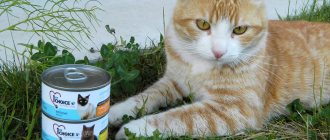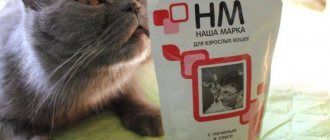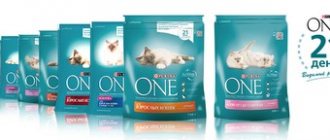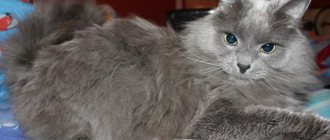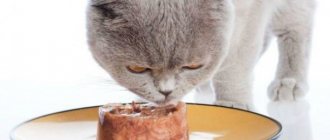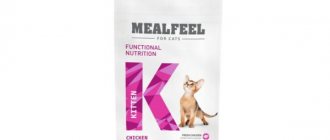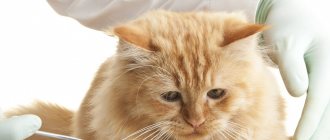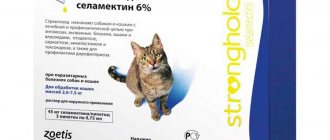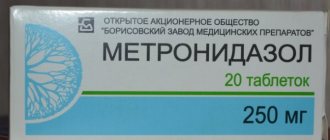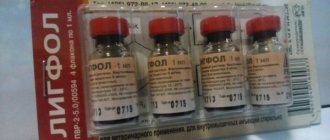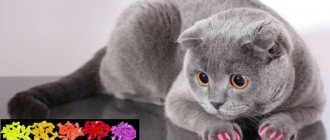Manufacturer
The manufacturer of Whiskas feed is MARS. The brand first appeared in 1958 in the UK, quickly became popular, and has been producing animal food for more than 60 years. The management does not skimp on advertising, over all this time it has developed several types of both dry and wet food, and is opening more and more factories in different parts of the world (including in Russia: in Rostov-on-Don and in the Moscow region).
Feed was first brought to Russia from Germany in 1992, and 2 years later the first production was opened in the Stupinsky district of the Moscow region. In 2000, spiders appeared on the market.
The company has been engaged in charitable activities for a long time. In addition to helping homeless animals in shelters, the company helps implement projects in the field of pet nutrition.
Possible alternative
So what should you feed your pet? What food is the most healthy and safe for cats and kittens? An alternative is to offer premium cat food. These products have an extremely natural, optimally balanced composition. However, not every pet owner can afford such expensive food.
However, it should be noted that saving on Whiskas is nothing more than a myth. The fact is that such food has a low energy value and poor digestibility, therefore, in order to fully satiate and satisfy the feeling of hunger, the animal requires a fairly large amount of food.
In addition, Whiskas contributes to the development of a number of diseases, and treating a pet will cost much more than proper and healthy nutrition for it. Therefore, an excellent solution would be to use healthy and natural food.
Fish, meat, dairy and fermented milk products, the addition of herbs, vegetables - must be present in the pet’s diet, especially if we are talking about a kitten, a sick, pregnant, lactating cat or an elderly animal.
Feed class
Whiskas is an economy class cat food. In the first place in the list of ingredients are cereals, corn, and sometimes they even write “products of plant origin,” without specifying what is hidden under this. Plant ingredients are the main source of protein in the feed of this species.
Residues from meat production are included under the names “poultry meal”, “animal meal”, “meat derivatives”. Manufacturers claim that their product contains a unique balanced formula of carbohydrates, fats and proteins, citing approval from the International Center for Animal Nutrition and the Russian Association of Veterinary Practitioners.
The cost of a pack of food weighing 350 grams is approximately 70 rubles. Wet ones cost a little more. You can buy Whiskas in almost any store.
Range
Whiskas foods are available in dry, wet and specialty foods (treats, etc.), and are also divided by age: food for babies (pates, jellies, stews and dry pads), for adult animals (wet and dry) and for older cats (dry and wet). Each product has several series.
Dry
Dry granules are divided by age categories. There are no medicinal ones among them. Packing: 5 kg; 1.9 kg; 0.35 kg.
- For kittens from 2 to 12 months: Appetizing assortment with turkey and carrots (wheat flour, offal, milk powder, vitamin-mineral complex).
- For adults: Seafood platter with salmon, tuna and shrimp; Appetizing platter with chicken, duck and turkey (poultry meal included); Appetizing platter with beef, lamb and rabbit.
- For older cats: Appetizing assortment with poultry meat.
- For neutered animals over one year of age: Chicken pads and beef pads (contains ingredients to prevent urolithiasis).
- Treats: Whiskas Duo Treats (with fish, veal, turkey or chicken. Ingredients: cereals, offal, cheese, vitamin complex).
Wet
For babies from a month to a year: Stew with lamb, chicken and salmon (4% meat, vegetable oil, taurine, vitamins, minerals); Jelly with veal or turkey (4% meat, vegetable oil, taurine, vitamins, minerals).
For adults:
- Chicken pate (25% chicken meat, vegetable oil, taurine, vitamins, minerals); Meat rolls with rabbit and veal (percentage of meat not specified, grains, taurine, vitamins, minerals);
- Stew with lamb and beef; lamb; veal; turkey and rabbit (4% meat product, cereals, taurine, vitamins, minerals);
- Chicken stew (10% chicken, grains, taurine, vitamins, minerals);
- Salmon stew; trout (4% fish, cereals, taurine, vitamins, minerals);
- Jelly with lamb and beef (4% beef, the same amount of lamb, cereals, taurine, vitamins, minerals);
- Jelly with rabbit and vegetables (4% rabbit meat, 4% carrots; cereals, taurine, vitamins, minerals);
- Chicken stew (4% chicken, grains, taurine, vitamins, minerals);
- Stew with turkey and vegetables (4% turkey, 4% carrots, cereals, taurine, vitamins, minerals);
- Stew with salmon (4% salmon, vegetable oil, cereals, taurine, vitamins, minerals);
- Beef liver pate (16% beef, 10% liver, cereals, taurine, vitamins, minerals);
- Veal pate (4% veal, cereals, taurine, vitamins, minerals);
- Chicken pate with turkey (6% turkey and 20% chicken, taurine, vitamins, minerals);
- Duck pate (4% duck, taurine, vitamins, minerals);
- Salmon pate (4% salmon, taurine, vitamins, minerals);
- Mini fillet with beef, rabbit or chicken (4% meat, minerals, vitamins, taurine);
- Cream soup with beef (4% beef, dry cream);
- Cream soup with chicken (chicken meat - 4%);
- Appetizing mix “Shrimp and salmon in creamy sauce” (fish and seafood, cereals, milk component, vegetable oil, taurine, vitamins, minerals);
- Poultry and beef in tomato jelly (how much meat is unknown, there is tomato powder);
- Lamb and beef in cream sauce (the percentage of meat is not specified, there is milk);
- Chicken and duck in cheese sauce (the percentage of meat components is not specified, there is cheese powder and ground corn).
For older cats:
- Lamb stew (4% lamb meat, offal, cereals, vegetable oil, taurine, vitamins, minerals);
- Chicken stew (10% chicken meat, offal, vegetable oil, cereals, vitamins, minerals, taurine);
- Veal pate (the same ingredients as in the stew described above, but there are no grains, and instead of chicken - 26% veal).
Prices
You can now view the current price of food and buy it right here:
The listed price of Whiskas dry food with beef and rabbit may vary slightly in different stores, since we took average data from several online storefronts:
- 350 gr. – 75 rub.;
- 800 gr. – 160 rub.;
- 1.9 kg – 360 RUR;
- 5 kg - 850 rub.;
The cost of dry menus for kittens, sterilized cats or a series of 7+ years is practically the same. The most profitable, in terms of price per 1 kg, would be to purchase the largest package weighing 5 kg. The price for a pouch of Whiskas wet food is 17-20 rubles.
Compound
The first place most often comes from grain crops: corn, corn gluten, ground wheat, wheat flour. Next - flour of animal origin: turkey, meat and bone, poultry, rabbit, lamb. The percentage is often indicated, but what parts of the animal or bird are used is hidden.
Protein plant extracts are listed as a separate item. By-products are added, but in addition to kidneys, spleen, lungs and other things, they also include hooves, horns, whole heads, fat, i.e. not the most useful ingredients. Animal fat is often unspecified. There is a minimal amount of vegetables, yeast, vitamins and minerals, there are no fruits and berries at all, all preservatives are synthetic.
Wet food includes residues from meat production that cannot be used for human consumption. These are tendons, ligaments, internal organs, etc. The amount of grains is not indicated (and corn often causes food allergies). There is taurine, individual vitamins and minerals.
Unlike other countries, in Russia there is no legal act obliging the publication of the full composition of food on the packaging (for example, such a law is in force in the USA). Therefore, it would be a good idea to check the information on the official website.
Advantages and disadvantages
- Whiskas food is easy to buy: in a specialized pet store, in a supermarket, and even in a small grocery store. The owner of the animal will be able to find him without any problems.
- Cheapness is another plus. Whiskas is one of the most budget-friendly brands that is accessible to almost anyone.
- The manufacturer offers several types of Whiskas food for sale, so from the wide range you will always find food for even the most capricious cat. There are also 2 separate special groups of food: for older cats, as well as sterilized and neutered. Feeds have different taste characteristics.
- The food in this line always smells good and is attractive to cats.
- Animal flour can hide anything, and it doesn’t have to be meat. Often ground skin, bones, feathers and fluff are added to the food. The goal is simple: to reduce the cost of production.
- Artificial components. Unlike holistic food, economy class food contains unnatural flavors and preservatives.
There are endless debates surrounding this food: some praise it and consider it quite suitable, others categorically demand that it be discontinued. The decision is up to you as the owner. You can understand whether a given food is suitable for your cat by its behavior and state of health. If your pet doesn't have watery eyes, diarrhea or constipation, or indigestion, and if he's still playful and active, everything is fine. But it is still not recommended to constantly feed animals with economy food.
Get acquainted with interesting cat breeds with the help of our encyclopedia: British Longhair, Javanese (Javanese), Minskin.
The main diseases caused by feeding Whiskas
When you regularly feed your pet with economy class food, such as Whiskas, Kitiket and other inexpensive brands, it begins to develop multiple pathologies. It doesn’t matter whether the food is dry or soft. At first, while the young cat’s body is strong enough, it copes with the negative effects of such nutrition. However, after 2-3 years, diseases begin to appear, which force you to constantly take the animal to the veterinarian and spend impressive sums on its treatment. The main diseases that are caused in cats by constant feeding of Whiskas food are :
- dermatitis in severe form - with it the cat develops intense itching, which leads to extensive, especially intense scratching, causing the formation of serious wounds, hair loss and suppuration;
- diseases of the gastrointestinal tract - their primary symptoms are frequent alternation of constipation and diarrhea, which are later joined by nausea and a general deterioration in the pet’s condition. The cat begins to lose weight and become weaker;
- pancreatitis;
- renal failure;
- liver pathologies - this organ is the first to take on the blow of all the harmful substances contained in the feed, as it is the body’s natural filter. Treatment, as a rule, turns out to be extremely difficult and lengthy. In severe cases, it is impossible to save the pet;
- urolithiasis - due to this pathology, the majority of cats that are kept on Whiskas and similar feeds die. Uric acid quickly begins to poison the entire body, which is why the animal experiences very severe pain not only in the kidneys, but also in the intestines, as well as the liver and lungs. Unfortunately, even with timely therapy it is not always possible to help a pet.
Even when, due to a pathological condition, the cat was transferred to a high-quality diet, after it was considered correct to feed it Whiskas food for a long time, it will not be able to restore its health. The serious consequences of constantly giving an animal artificial economy-class food are irreversible. And this is not difficult to understand if you know that in its composition, in addition to substances to attract animals (acting akin to drugs used by people), there is also a monstrous amount of preservatives, flavorings and stabilizers.
For the rest of the life of a pet who has lost health, the owner will have to support his body, providing proper nutrition according to a special therapeutic diet and regularly taking courses of medications prescribed by a veterinarian. Thus, having tried to save on feeding, the owner who believed the advertisement of cheap food subsequently spends much more to save the pet. A cat cannot remain healthy when consuming Whiskas.
© shutterstock
